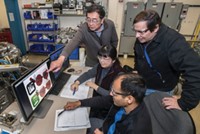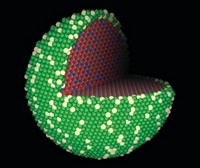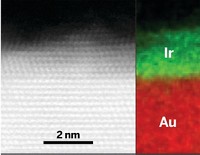Advertisement
Grab your lab coat. Let's get started
Welcome!
Welcome!
Create an account below to get 6 C&EN articles per month, receive newsletters and more - all free.
It seems this is your first time logging in online. Please enter the following information to continue.
As an ACS member you automatically get access to this site. All we need is few more details to create your reading experience.
Not you? Sign in with a different account.
Not you? Sign in with a different account.
ERROR 1
ERROR 1
ERROR 2
ERROR 2
ERROR 2
ERROR 2
ERROR 2
Password and Confirm password must match.
If you have an ACS member number, please enter it here so we can link this account to your membership. (optional)
ERROR 2
ACS values your privacy. By submitting your information, you are gaining access to C&EN and subscribing to our weekly newsletter. We use the information you provide to make your reading experience better, and we will never sell your data to third party members.
Nanomaterials
Single-atom platinum catalyst efficiently generates hydrogen from methanol
Study advances methanol as hydrogen carrier for fuel-cell automobile use
by Mitch Jacoby
December 1, 2019
| A version of this story appeared in
Volume 97, Issue 47

Fuel-cell automobiles powered with clean-burning hydrogen are slowly being commercialized for private use. The pace could accelerate, benefiting the environment, if hydrogen was supplied not as a high-pressure gas but rather as an inexpensive liquid that was shipped and pumped using today’s vast liquid-fuel infrastructure. A study describing a single-atom catalyst that efficiently strips hydrogen from methanol, a multimillion-metric-ton commodity, nudges that car-fuel scenario a step closer to reality (J. Am. Chem. Soc. 2019, DOI: 10.1021/jacs.9b09431). Ji Su and Gabor A. Somorjai of Lawrence Berkeley National Laboratory and the University of California, Berkeley, and coworkers have developed a procedure for using ascorbic acid and a platinum precursor to anchor isolated platinum atoms on a porous ceria support. The dispersion of the atoms, which maximizes the use of expensive metals, was confirmed via microscopy and spectroscopy; it shows that the atoms remain stable at elevated temperatures for more than 120 hours. In addition, the single-atom catalyst works effectively with a variety of alcohols, the team reports. And compared with 2.5 nm and 7 nm platinum nanoparticle catalysts, the new catalyst is 40 and 800 times as active, respectively.





Join the conversation
Contact the reporter
Submit a Letter to the Editor for publication
Engage with us on Twitter